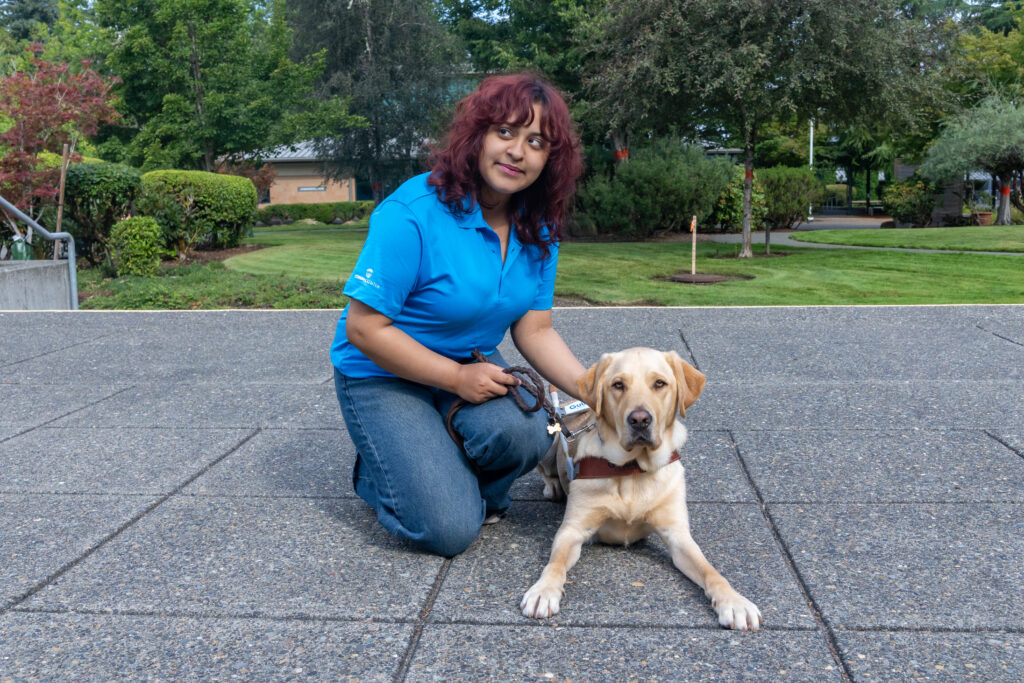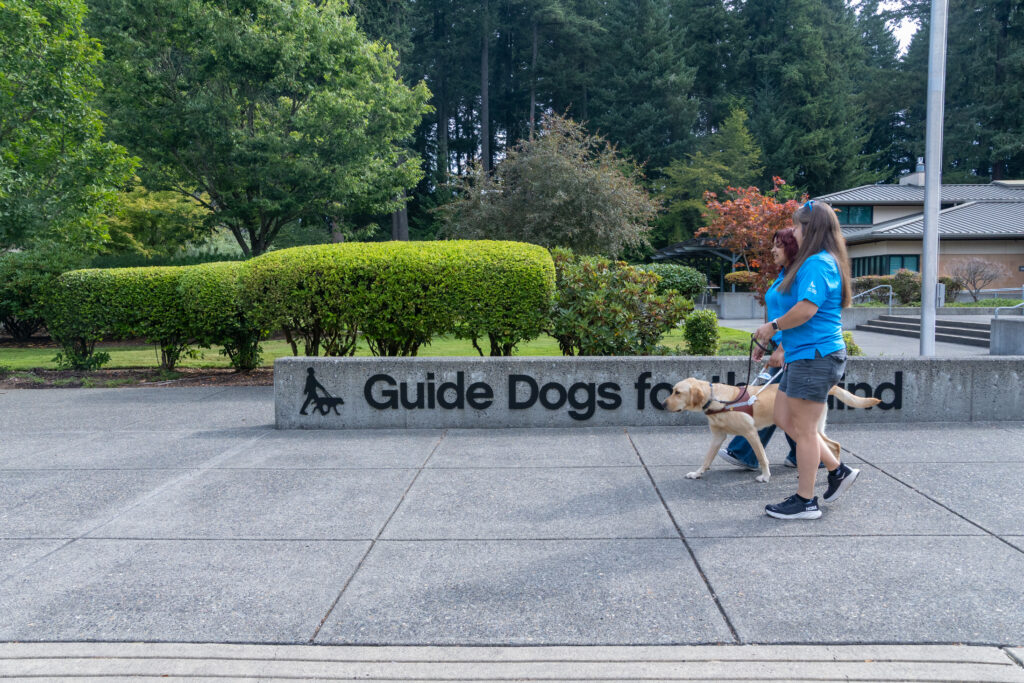Guide dogs can do more than just help blind and low-vision people get from point A to point B—they can also empower their handler’s career aspirations. A partnership between Guide Dogs for the Blind and the American Printing House for the Blind’s Career Connect Center is building on the relationship between guide dogs and employment through its Careers and Canine Connections program to do just that.
Just 52% of visually impaired Americans of working age were employed as of 2023—compared to 80% of the general population. On the bright side, that number is up from 2017, when only 44% of visually impaired people were employed.
Blind and low-vision people face substantial barriers to employment, including employer discrimination and failure to provide accommodations, absence of training and support, accessible transportation and more.
“You do have to prove to the employer that you’re capable because most employers don’t know anything about blindness,” Jane Flower, youth outreach specialist at Guide Dogs for the Blind and head of Careers and Canine Connections, told SUCCESS®. “They don’t think people that are blind or have low vision are capable of doing things because they don’t know what technology is available out there to help people.”
Bringing career development and guide-dog mobility together

Careers and Canine Connections gives visually impaired people the tools they need to clear those barriers during its weeklong program, which is held on the Guide Dog for the Blind’s Oregon campus. It’s designed for youth ages 18 to 24 to explore guide-dog mobility along with career development.
The program includes workshops on mentorship, transportation and accessibility rights under the Americans with Disability Act (ADA). Participants learn how to look for, land and prepare for a job. They participate in informational interviews and explore career options.
And they learn about the ins and outs of living with and working with a guide dog—from how to care for the dog to dressing professionally while keeping shedding in mind. This includes a 12-hour trial where they practice taking care of the dog overnight, including feeding, watering, grooming, walking and picking up after the dog.
Participants leave the program empowered with knowledge and choice
That trial run helps participants decide if a guide dog is right for them. Three out of the nine participants in this year’s cohort have already put in an application, Flower said. For those who do decide to apply, they leave the program prepared for the training class they will take once they are matched with a dog.

“I really wanted to have that hands-on experience with one, and so knowing that the program offered that, I knew that it was going to be perfect for me to figure out whether a guide dog would be right for me,” Melina Mendoza, a participant in Careers and Canine Connections, said. “Once I finally did get to have the dog overnight, I was able to realize, yes, this is definitely the right path for me.”
In addition to helping her decide to apply for a guide dog, Mendoza also found the workplace focus and the program’s ADA workshop extremely helpful. While she knew about the accessibility law beforehand, she left with a better understanding of how it applies to her as a legally blind individual.
“I feel like that was very beneficial and also kind of made me feel more confident in knowing that I had these rights,” she said. “And [tactics] that I could use… if I’m ever in a difficult situation in a workplace.”
Guide dogs build confidence and connections
For those who choose guide dogs, there is an enhanced level of confidence that translates to the workplace, Flower explained—adding that confidence is especially important during the interview process where employers may already have doubts.
Blindness can also cause isolation, but a guide dog helps form connections with co-workers. As a handler herself, she noted that her guide dog helps her travel for work, navigate new places and meet new people.
“When you have a cane, it kind of unfortunately deters people,” Mendoza said. “Whereas a guide dog is very open for conversation.”
Since Mendoza plans on working in a hospital setting after graduating from college, she also foresees the guide dog helping her avoid making unwanted physical contact with medical equipment and patients in crowded hallways. This will enable her to feel more confident and avoid potential accidents.
“[A] guide dog is an obstacle avoider, while a cane is an obstacle finder,” she said. Likewise, she is eager to be matched with a dog that will help her navigate around obstacles on campus and aid with public transportation.
Careers and Canine Connections is free and open to visually impaired youth nationwide
There are 13 other guide dog schools in the U.S., with each having their own individual programs, Flower explained. But Careers and Canine Connections—which is in its third year—is the first and only program of its kind. Fortunately, it is open to visually impaired youth from across the U.S. and Canada. And it’s completely free. The program will even pay transportation costs. As she explained, it’s all part of a seismic shift in preparing visually impaired youth to choose careers instead of being funneled into entry-level jobs like call centers.
Photo by PeopleImages.com – Yuri A/Shutterstock

